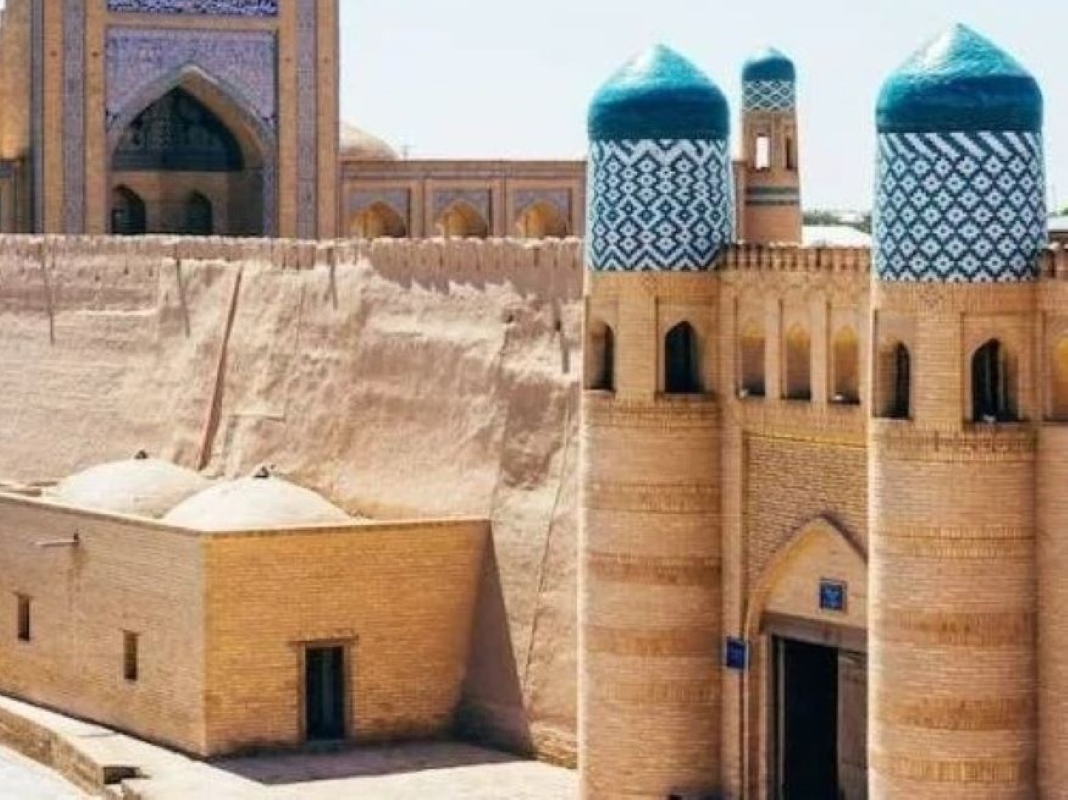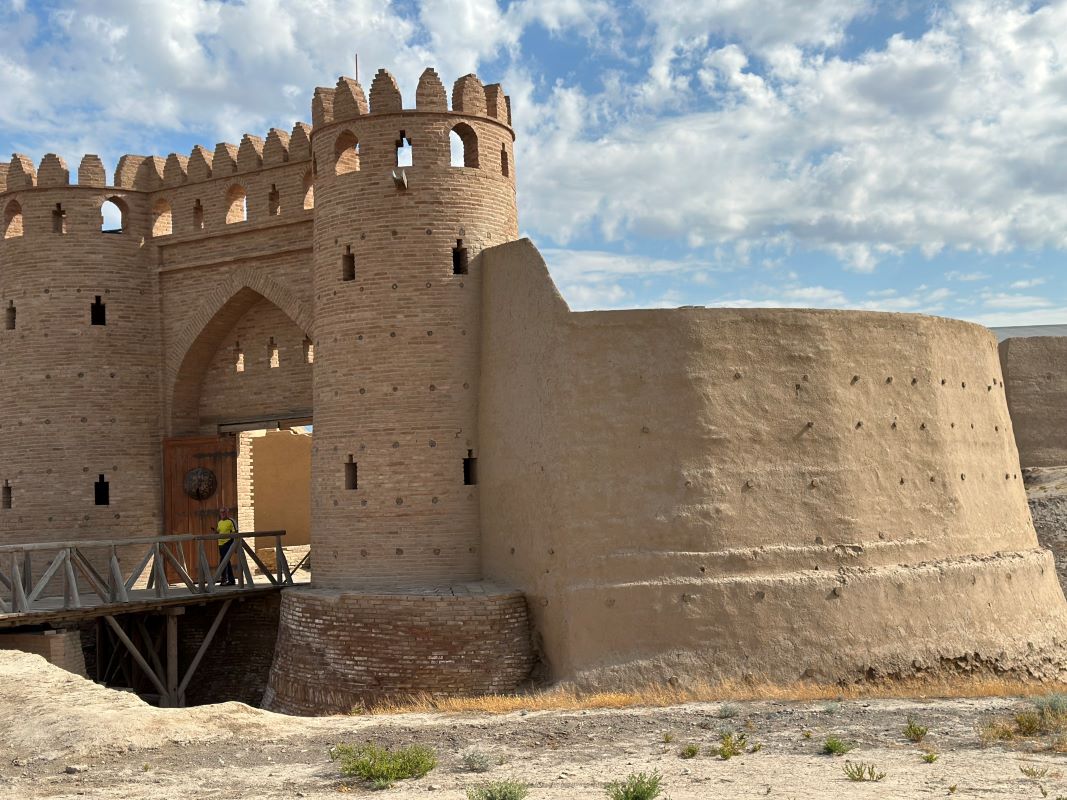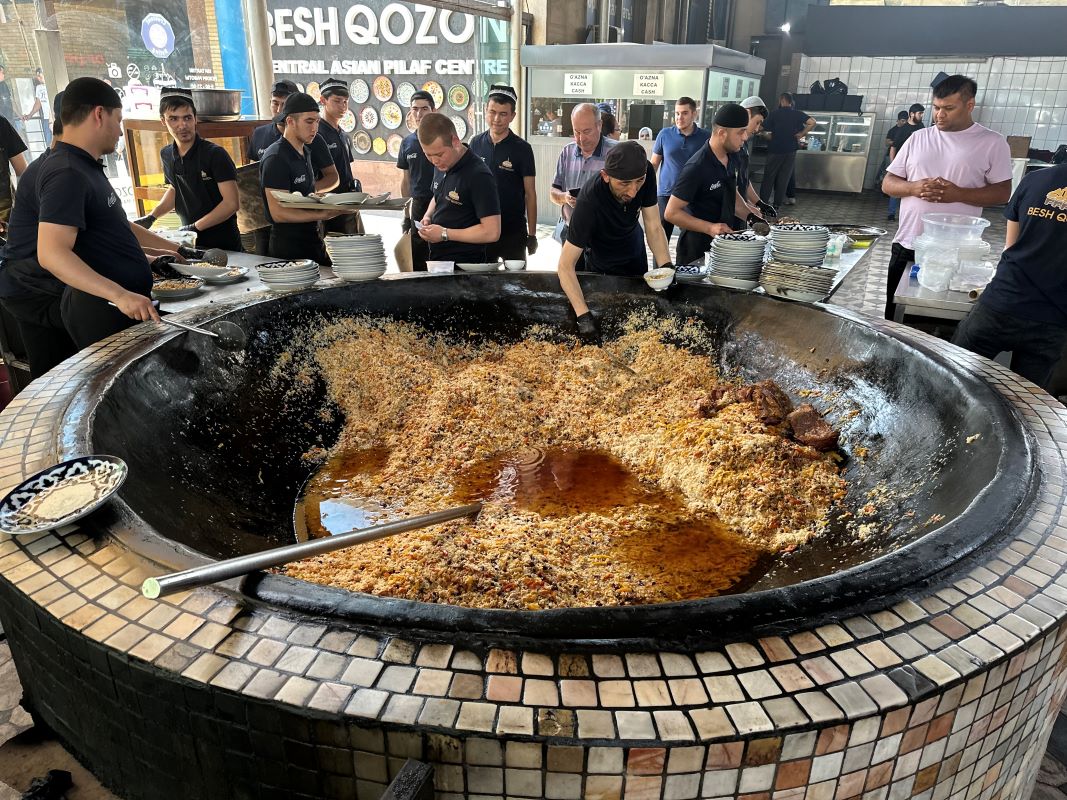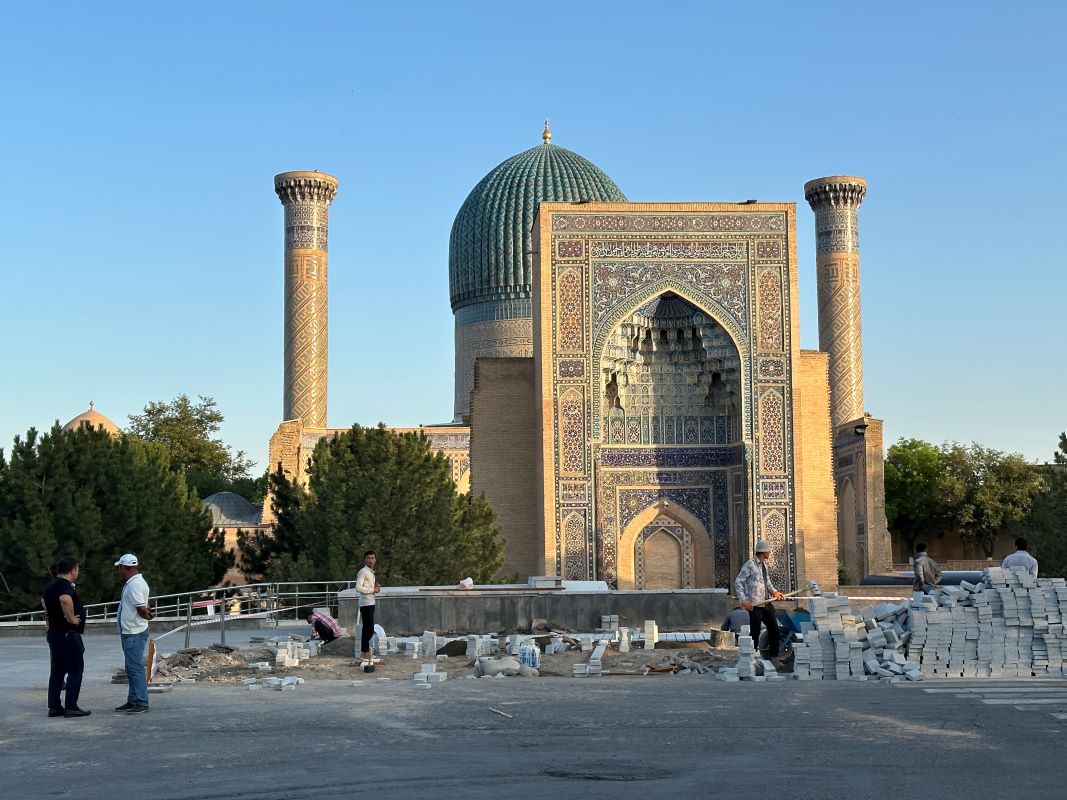Itchan Kala (Uzbek: Ichan-Qаl’а) is the walled inner town of the city of Khiva, Uzbekistan. Since 1990, it has been protected as a World Heritage Site.
The old town retains more than 50 historic monuments and 250 old houses, dating primarily from the eighteenth or nineteenth centuries. Juma Mosque, for instance, was established in the tenth century and rebuilt from 1788 to 1789, although its celebrated hypostyle hall still retains 112 columns taken from ancient structures.
Notable buildings in Itchan Kala are Konya Ark, Juma Mosque, Ak Mosque, Hasanmurod Kushbegi mosque, madrasahs of Alla-Kulli-Khan, Muhammad Aminkhon, Muhammad Rakhimkhon, Mausoleums of Pahlavon
Ichan-Kala is not large as a town; its area is about one square kilometer. The major Ichan-Kala street running from the western gate to the eastern gate has the most interesting buildings. Near the western gate stands Kunya-Ark Fortress (construction began in 1686); to the left of the western gate is the largest Khiva madrasah Muhammad Amin-Khan Madrasah (1845 – 1855). A little further is the famous Kalta-Minor Minaret (1845 – 1855), which is 29 meters tall. It had been originally designed to be 80 meters tall but remained incomplete. Closer to the center of Ichan-Kala is the majestic Muhammad Rakhim-Khan Madrasah (1876). Near the eastern gate is Tash-Khauli Palace (1830 – 1838) and Allakuli-Khan Madrasah (1834 – 1835), which once housed the town’s library. South of the center is Sayyid Alauddin Mausoleum (construction began in the second half of the 14th c), Islam Khodja Ensemble (1908 – 1910), Shergazi-Khan Madrasah (1718 – 1726) and Pakhlavan Mahmud Mausoleum (18th – 20th c).
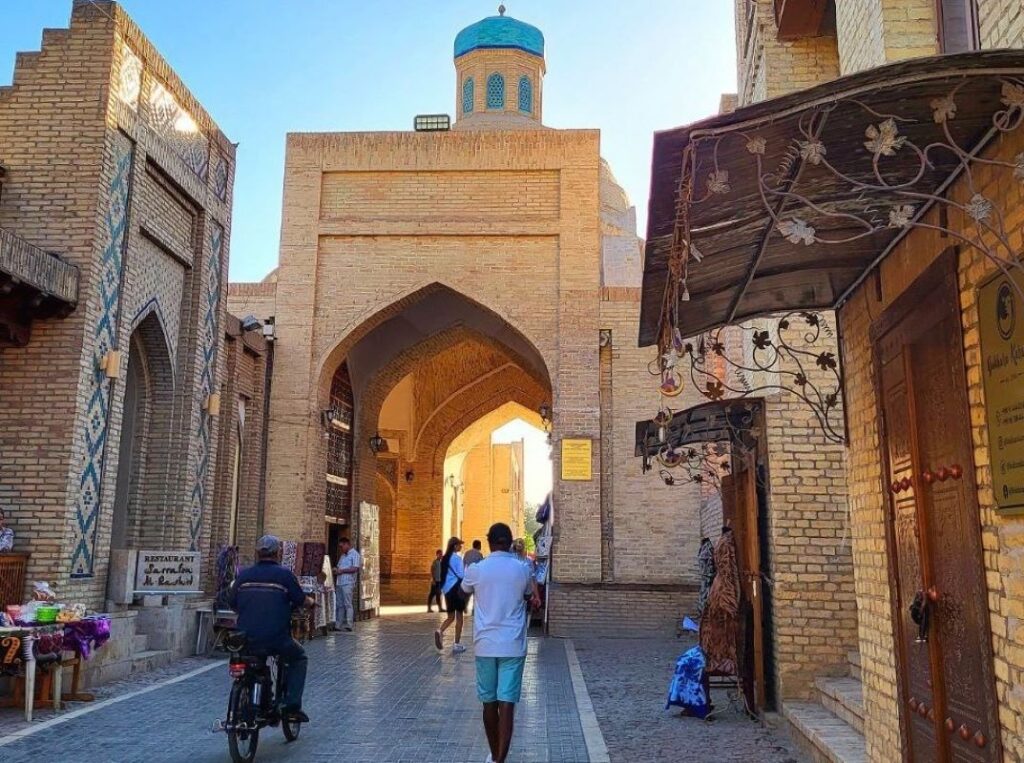

Almost all the buildings in Ichan-Kala are decorated with azure, blue and white majolica.Ichan-Kala is not large as a town; its area is about one square kilometer. The major Ichan-Kala street running from the western gate to the eastern gate has the most interesting buildings. Near the western gate stands Kunya-Ark Fortress (construction began in 1686); to the left of the western gate is the largest Khiva madrasah Muhammad Amin-Khan Madrasah (1845 – 1855). A little further is the famous Kalta-Minor Minaret (1845 – 1855), which is 29 meters tall. It had been originally designed to be 80 meters tall but remained incomplete. Closer to the center of Ichan-Kala is the majestic Muhammad Rakhim-Khan Madrasah (1876). Near the eastern gate is Tash-Khauli Palace (1830 – 1838) and Allakuli-Khan Madrasah (1834 – 1835), which once housed the town’s library. South of the center is Sayyid Alauddin Mausoleum (construction began in the second half of the 14th c), Islam Khodja Ensemble (1908 – 1910), Shergazi-Khan Madrasah (1718 – 1726) and Pakhlavan Mahmud Mausoleum (18th – 20th c). Almost all the buildings in Ichan-Kala are decorated with azure, blue and white majolica.Mahmoud, Sayid Allavuddin, Shergozikhon as well as caravanserais and markets.
The architectural monuments of Ichan-Kala are decorated with carvings on wood, stone, ganch and other decorative patterns. In 1961, Ichan-Kala, as an architectural monument, was taken under special protection, made a museum-reserve, and in 1990 included in the UNESCO World Heritage List.
According to the Cultural Heritage Agency, Ichan-Kala is in the TOP 9 impressive fortress cities around the world. The rating was compiled by one of the most influential travel magazines in the UK – Wanderlust Travel Magazine. The authors called Ichan-Kala “a labyrinth of mosques, palaces and minarets” and placed it in fifth place.

